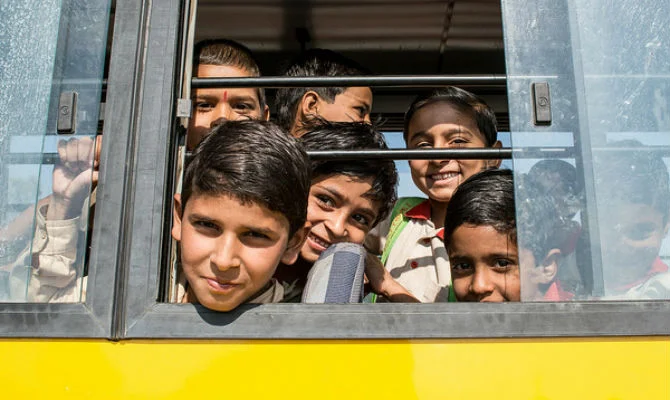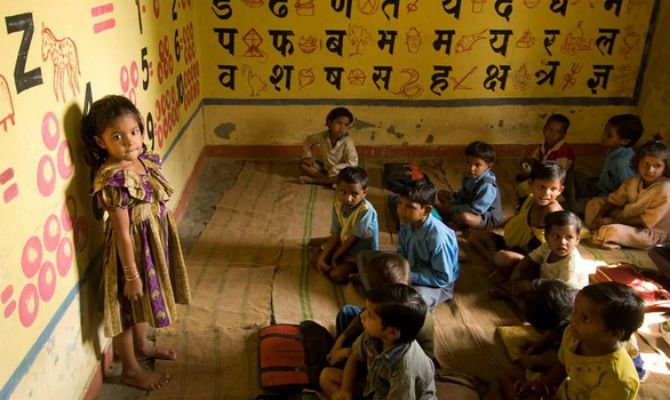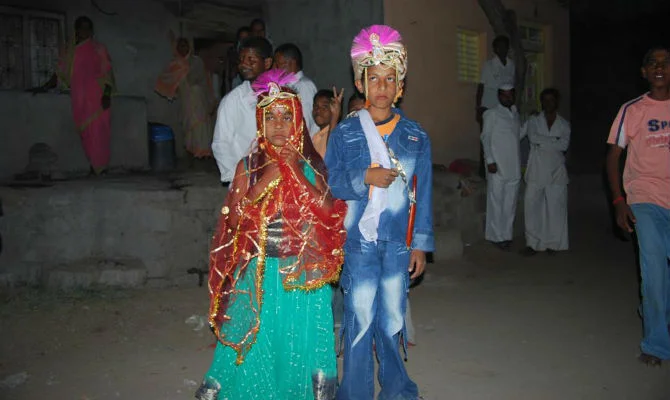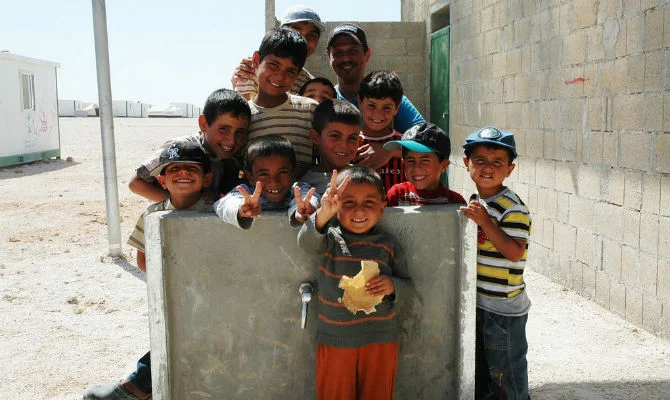What is education? You might recall those silly songs about conjunctions you learned in class, or that science project that didn’t go quite right, or those student loans you’re still paying off. In reality, education differs for everyone.
There’s two definitions in the dictionary. The classic definition is “the process of giving or receiving systematic instruction.” The second states it’s “an enlightening experience.” Personally, I like the second explanation. Education shouldbe an enlightening experience. Sadly, over 60 million children around the world still don’t have access to education.
There are six major barriers denying children from education.
1. Lack of Transportation

Most of the children not in school around the world live in just a few countries. 74 percent of children who cannot access education live in countries in Sub-saharan Africa or Southwest Asia. These countries often lack the roads and buildings that children need to physically get to an education experience in the first place. In some rural areas, it’s common for children to walk two or three hours to get to school. When this distance is combined with the malnutrition and hunger caused by poverty it makes accessing education extremely difficult.
Lack of transportation to a nearby school impedes girls education the most. In India, more girls drop out of secondary school than boys because of fear of assault, rape, and violence when they walk to and from school.
Silver lining: Investing in transportation and building new schools closer to communities will make a huge difference in improving access to education. If you build it, he (or she) will come.. and it wouldn’t hurt to add a baseball field either.
2. Cost and school fees
Speaking of increasing attendance, there is one barrier that when eliminated has a profound effect on school attendance. School fees. While the UN Declaration of Human Rights states that education should be free for the elementary and fundamental stages there are still regions that require yearly school fees to attend.
On top of this, there are other hidden fees. Even without school fees, children often have to pay for uniforms, pens, textbooks, desks...and the list goes on.
So the first step is eliminating school fees flat-out. Supporting good governance and providing school supplies, books, technology, teachers, and buildings will reduce the cost of education--making it achievable for all.
Silver lining: When school fees were abolished in Kenya, attendance rose by 1.3 million! You can learn more about how to end school fees here.
3. Gender inequality

In many developing countries social stigmas exist that make it hard for girls to attend school. In rural parts of India, sons are chosen to stay in school over girls because families want girls to work in the home where all household work, including caring for younger siblings, is placed on females. The unequal amount of household work placed on girls often causes parents to keep girls out of school and/or girls to drop out. I think all families want to send all their children to school, but circumstances caused by poverty combined with gender stereotypes cause boys to complete more school.
It’s not just parents who make the decision to take girls out of school. Girls themselves drop out due to pregnancy, fear of violence and harassment. In countries like Nigeria, young girls regularly find boyfriends to pay their school fees, making the whole pregnancy issue more likely.
School environments in developing countries are often not very girl-friendly either. In Eritrea and Mali only 30 percent of teachers are female. More female teachers can empower girls by showing them what an education can lead to.
Female teachers are not the only thing schools lack. Toilets and access to sanitation for girls is another form of gender inequality that keeps girls from education. Many adolescent girls in developing countries drop out or miss school because of their menstrual period. There are solutions though. Check out the underwear that is breaking this barrier!
Promoting gender equality requires participation from all. Boys can help out with household chores for a start. Next time I’m home, you can bet I’ll remind my brothers when it’s their turn to do the dishes.
Silver lining: Girls attendance in school has risen at all levels of education over the past three decades. And there’s no reason for that trend to stop.
4. Child labor

If you’ve seen the movie Zoolander you might remember the scene where Ben Stiller’s character is brainwashed to believe child labor is good. If you have no idea what I’m talking about, I hope you agree you’d have to be brainwashed to think child labor is good.
Child labor is work that is mentally and emotionally draining. It deprives children of healthy development and education. Child labor often exists in countries vulnerable to natural disasters, and those that lack infrastructure for health care and other income securities. When parents or grandparents get sick and cannot work, children often try to balance school with work or are forced to drop out to support families. Child labor work is often illegal and dangerous, too. Access to free education is necessary to end child labor because without schools to attend, children often have few alternatives to joining the labor force early, often getting stuck in menial, insecure jobs for life.
Silver lining: Demanding transparency on how products are made (i.e. no child labor), and supporting gender equality so women can access the labor market are a few ways to help end child labor.
5. Child marriage

Do you remember your first crush in school? Probably awkward and mostly involving sweaty hand holding. Talking to the boy or girl you liked in school is uncomfortable, and maybe that’s inevitable--but child marriage is something that is avoidable. Still, one in nine girls is married before age 15. This needs to end.
Why does child marriage occur?
Extreme poverty, lack of income, gender inequality and cultural stigmas all perpetuate child marriage. One way to end child marriages is to eliminate the customs of bride prices and dowries. A dowry is when the bride’s family pays the groom’s family to essentially accommodate the “burden of taking their daughter.” Young brides are often married because in cultures with dowries, families do not have to pay as much to the husband’s family for a young, uneducated bride.
A bride price is the opposite--a gift or fee is paid to the bride’s family. Both create incentives for families to marry daughters at young ages for financial reasons.
The benefits of investing in girls’ education are plentiful. Incentives to keep girls in school in the long run are obvious. Yet, it’s challenging for girls to stay in school, especially past secondary school. Parents often believe they are doing what’s best for girls by marrying them off at young ages. If a family cannot afford to keep their daughter safely in school, or financially support her as she gets older, then the next best option is to have her married.
Silver lining: Keeping girls in school “takes girls off the marriage market,” so providing access to education will end child marriage at a much faster rate.
6. Conflict

According to UNESCO, the number of children out of school increased over the past few years. 1 out of 8.5 children lacked access to education in 2013 compared to 1 out of 11 in 2010.
Why are more children out of school today?
Conflict. In the past year, 60 million refugees fled violence and war in conflict-affected countries. Over half of these refugees were children.
Conflict creates a hostile environment and is one of the biggest barriers to education for children. For example, in 2000 the Syrian Arab Republic achieved universal education for all children. Then the civil war happened. Suddenly, 1.5 million children were displaced from their homes and removed from school.
28 million children not in school come from or live in conflict-afflicted regions around the world. But guess what? Education can actually prevent conflict! Tolerance and peace promoted through education can decrease conflict. Attendance helps too! Doubling the percentage of children that complete secondary education can reduce the risk of conflict by 50 percent.
Silver lining: Making education a priority for humanitarian aid in conflict countries can help end the 400 identified conflicts worldwide.
Access to education for all may seem like a big task, but a lot of progress has already been made. Continuing to support, fund, and promote free education for all will create a more peaceful, equal, and healthy world. As global citizens we must work hard to break down these barriers and make access to education a top priority for all in the fight to end extreme poverty.
TAKE ACTION NOW by tweeting to leaders in Norway and Uruguay to make gender equality an educational priority around the world!